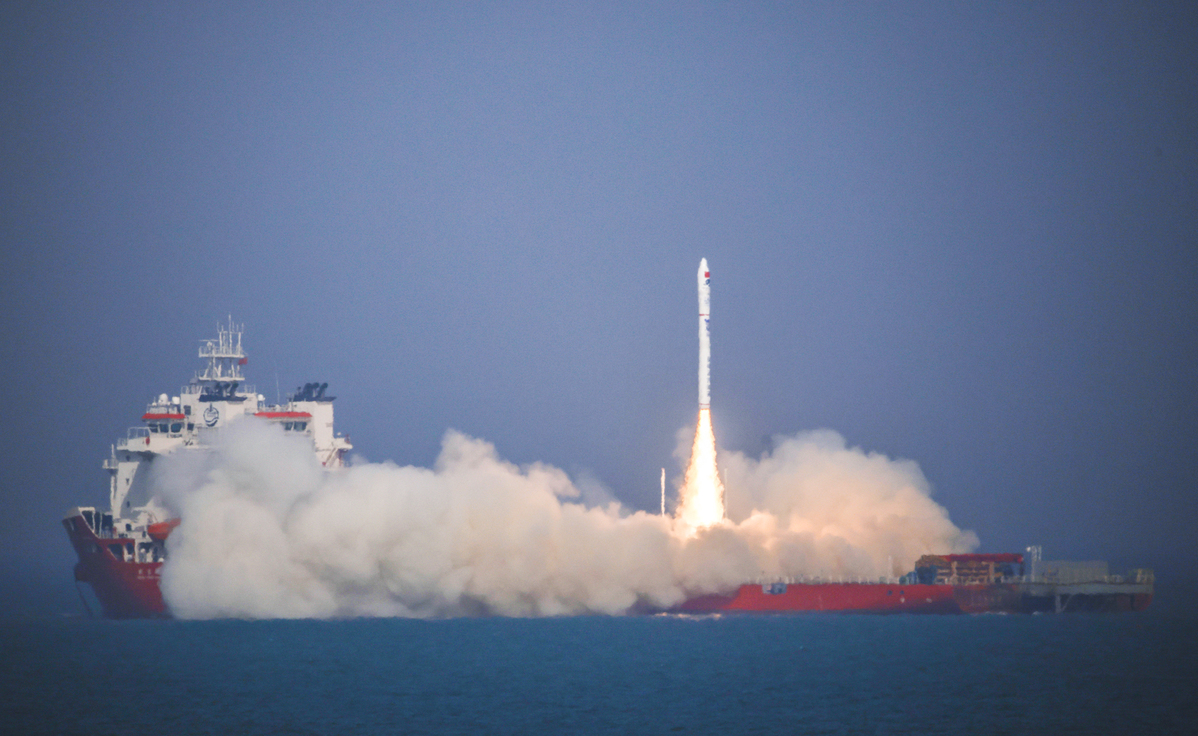Chinese private company carries out fifth sea-based launch


Galactic Energy, a private rocket maker in Beijing, made the fifth sea-based launch mission of its Ceres 1 carrier rocket on Monday afternoon.
The company said in a news release that the rocket blasted off at 3:38 pm from a mobile launch platform — a modified deck barge — in the Yellow Sea off the eastern province of Shandong and then sent four satellites into a low-Earth orbit about 850 kilometers above the Earth.
The satellites were built by Guodian Gaoke, a Beijing-based private satellite operator, for its Tianqi Network, which, after the latest launch, has 37 satellites. The network collects data for the internet of things and has been used in many fields such as forestry, agriculture, tourism and environmental protection, according to Galactic Energy.
So far, Galactic Energy has carried out 20 orbital launches using the Ceres 1 model, far outperforming other private competitors. These flights have placed 81 commercial satellites into space.
The Ceres 1's first sea-based launch took place in September 2023 off the coast of Shandong, placing four Tianqi satellites into space. That mission made Galactic Energy the first Chinese private company to launch a rocket at sea.
The second such mission happened in May and also deployed four satellites. The third occurred in August and involved six satellites. The fourth was conducted in December, placing four satellites.
By now, China has performed 16 sea-based launches, using four types of rockets: Long March 11, Smart Dragon 3, Ceres 1 and Gravity 1.
The solid-propellant Ceres 1 is about 20 meters tall, has a diameter of 1.4 meters and mainly burns solid propellant. With a liftoff weight of 33 metric tons, it is capable of sending a 300-kilogram satellite or several satellites with a combined weight of 300 kg, to a 500-km sun synchronous orbit, or 350-kg payloads to a low-Earth orbit at an altitude of 200 km.
- China's relay satellite operating smoothly, ready to support global lunar missions
- 3 executed for abusing, raping kids
- Fudan forges AI sustainability pact with Korean, Singapore universities
- Expert's quest to improve Alzheimer's care in China
- 'Memory clinics' turning back 'silver tsunami' of dementia
- Chinese drones hailed by foreign clients





































